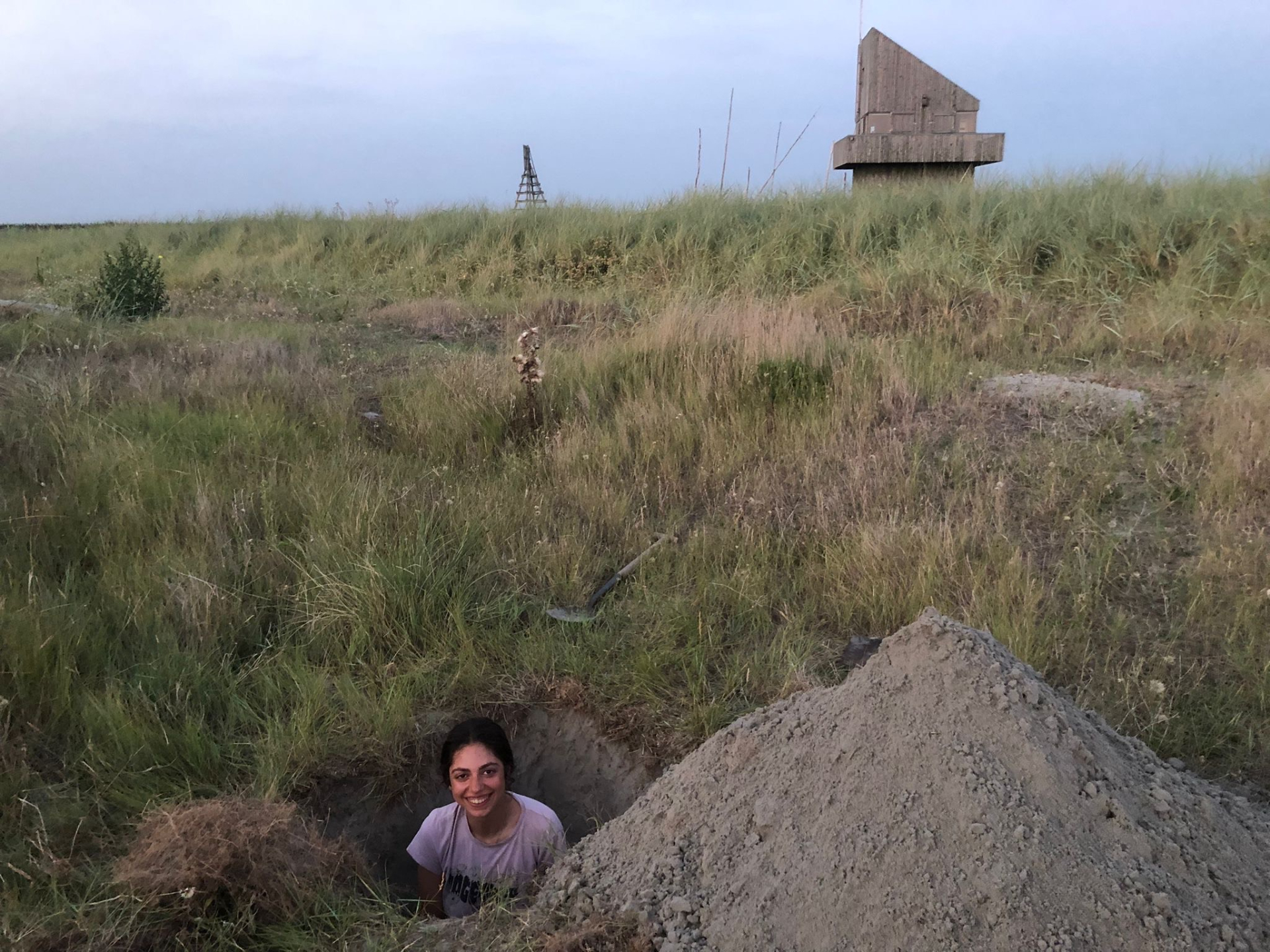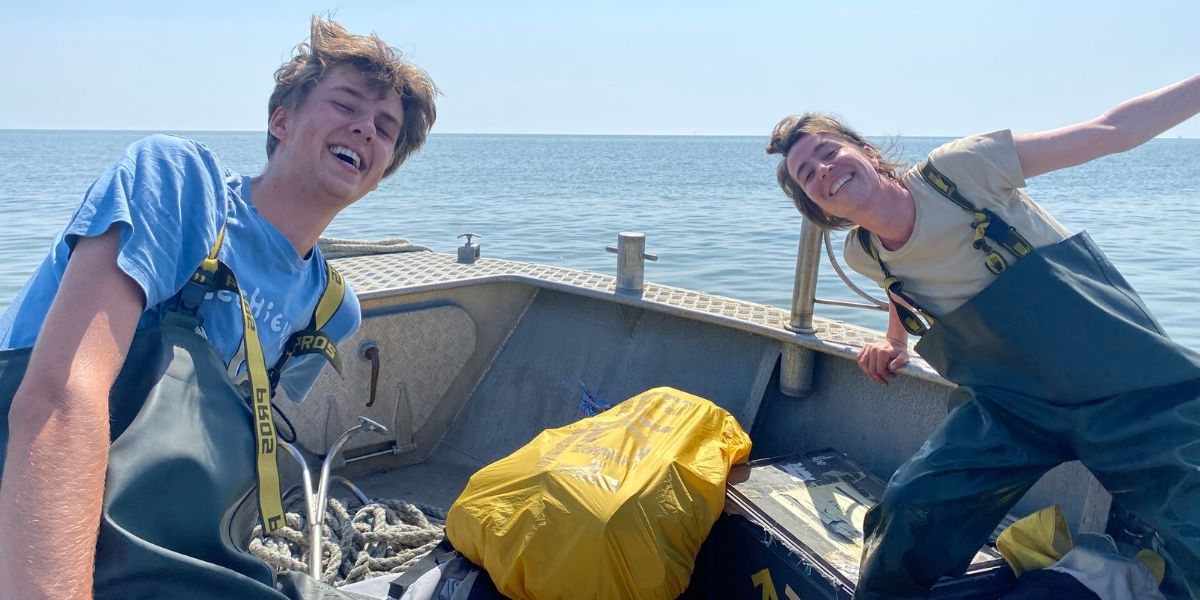7th of August: arrival
Early in the morning, I meet Angeliki on the first ferry from Texel to Den Helder, from where Job gives us a lift to Harlingen. There, the ship Asterias is already waiting to take us to Griend! Julia, Emma, and Farhana soon arrive in a small car, and Manno joins us later. The crew of the Asterias is very friendly and provides us with a much-needed cup of coffee. My favourite part of the fieldwork is always the speedboat ride that takes us the final stretch to the island. I’m in luck this time: it’s high tide when we arrive, so we have a long distance to cover! Once we’ve settled into the small wooden cabin, we practise the method for sampling shrimp on the mudflats. It’s extra special this year because Emma, who developed the method years ago as part of her PhD, is here with us. The procedure is as follows: a metal bucket is tied to a pole and swung across the mudflat to scoop off the top layer of sediment, which is then sieved and stored in a jar. Information about the abundance, size, and distribution of shrimp and crabs is used to map which birds feed on these animals in the mudflats. After the demonstration, we take a walk around the island of about four kilometres in total. Along the way, we spot a sanderling with a transmitter, a dead seal, and two messages in bottles. We finish the day by watching a beautiful sunset before heading to bed early, ready for a productive day tomorrow.
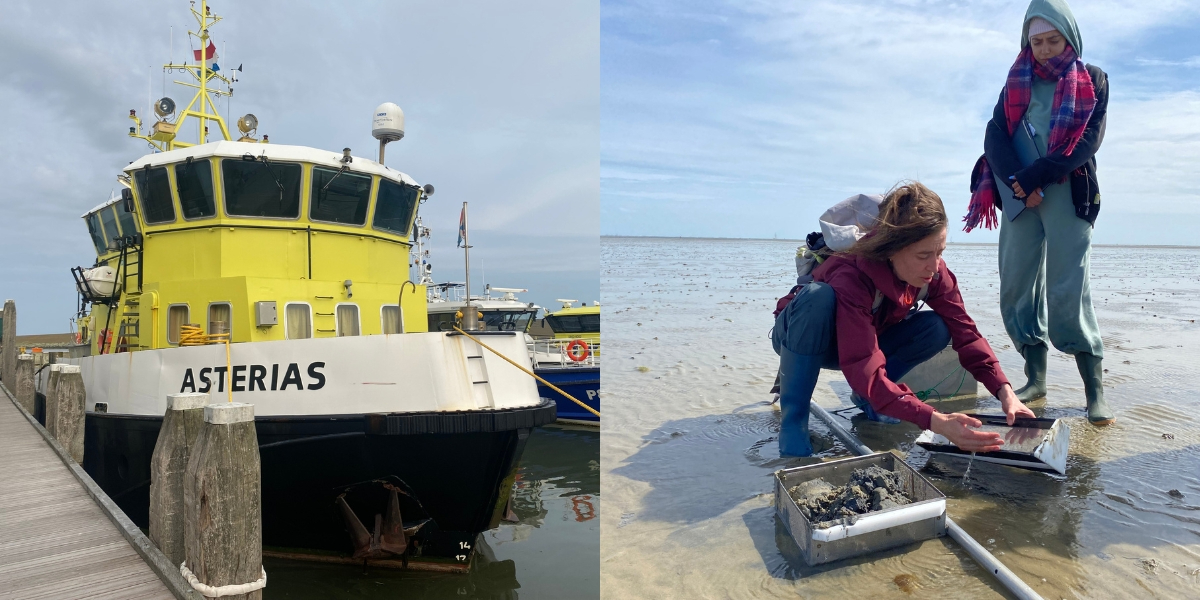
8th of August: out on the mudflats
Low tide won’t arrive until late in the afternoon, so the tides grant us a slow and quiet morning in the cabin. Well, quiet in theory, because there is plenty to prepare for the first sampling round: gathering equipment, mapping out routes, dividing into teams, and so on. Last night, some confusion had arisen over which coordinates needed to be sampled, so some quick adjustments were necessary. In the end, the decision is made to sample points that aren’t shown on the maps that we will take out onto the mudflats. Without access to a printer, we copy them by hand from a phone screen. By the time the tide is at the right level, all preparations are complete, and we can set out! In parallel routes, our three two-person teams take samples along the eastern side of the island. We fill plenty of jars with shrimp, and there is no shortage of tiny crabs either. The tide is already rushing back in as Farhana and I approach the island, so we pick up the pace. We are more than satisfied with the 60 points we managed to complete in this single day, and in the evening, we are rewarded with a stunning full moon.
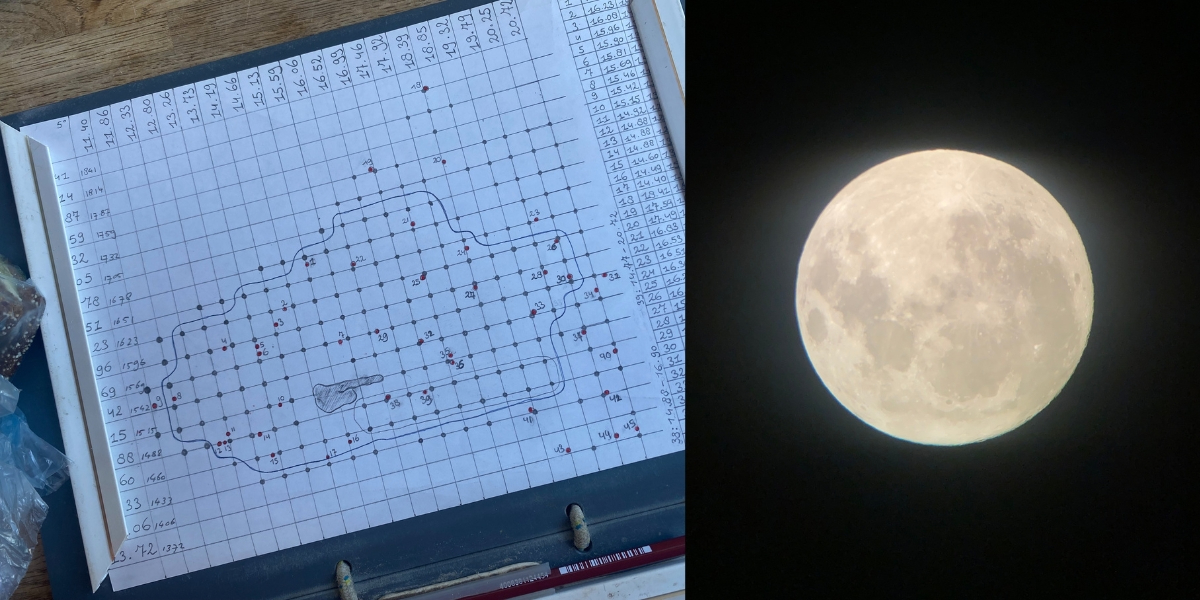
9th of August: sampling and sorting
The morning flies by once again: we have breakfast as soon as Emma has returned from reading bird rings, and spend the rest of the morning sorting samples and preparing for the rest of the day. A delicious soup is already simmering on the stove to eat upon our arrival, and the points we samples yesterday are ticked off on our maps. Angeliki, with her extensive experience in identifying and measuring the crustaceans in the samples, keeps the mood lively with Greek music, perfect work fuel. Julia and I plan a route along the north side of the island, dividing the coordinates into three ‘pie slices’. In the same teams as yesterday, we set out again, and once more with great success! In the evening, Manno and I try to identify all the lighthouses on the Wadden Sea islands based on their light flashes. After some confusion caused by the lighthouse in Den Helder, we manage to spot all of them, except the one on Schiermonnikoog.
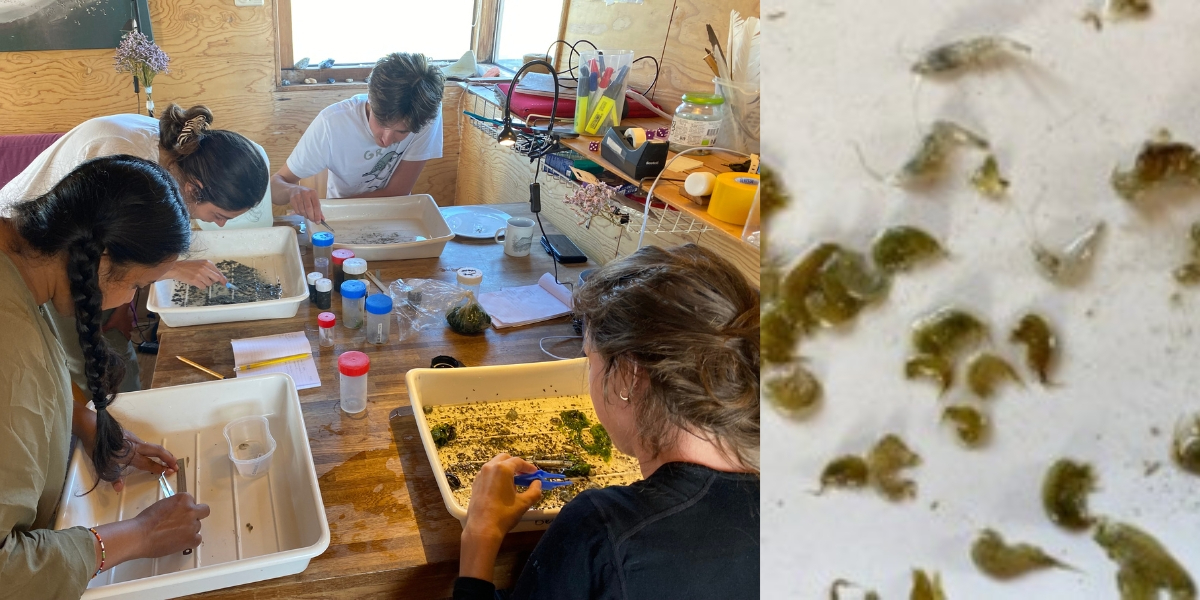
10th of August: change of plans
Today, the western side of the island is conquered! Farhana has made a delicious dahl for lunch, which gives us plenty of energy for the mudflats. Unfortunately, someone fell ill, so we have to redistribute the points halfway through the route. However, we still managed to succeed! The planned coordinates are sampled, and we reach the island before the incoming tide catches up with us. Since we’re working so quickly and efficiently, we’re considering the option of heading back to the mainland earlier than planned. Of course, it’s a bit of a shame to leave this beautiful place earlier, but it’s also better not to disturb the birds with our presence any longer than necessary.
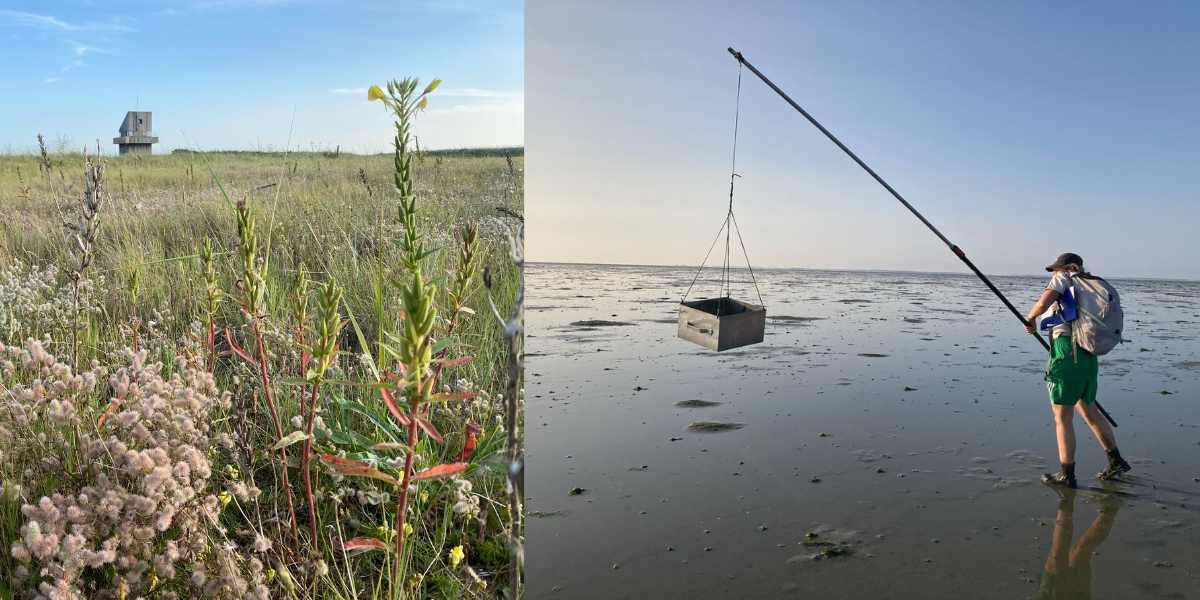
11th of August: mission accomplished!
We’re flying through the fieldwork and still managing to get a lot of “lab work” done as well. All of us are getting increasingly skilled at identifying shrimp and crabs by species and measuring the length of the common shrimp, which will save work later on! We’re even moving on to the last samples, on the north-western side of the island. In past years, certain points here couldn’t be sampled because they were unreachable at low tide, but with our efficient planning, we’ve even managed to get to some of these locations! One team did encounter the island’s infamous gully— a deep depression in the mudflat running along the eastern side of the island. The water there can reach shoulder height, so it’s best to avoid it if possible (and keep your feet dry). With a bit of extra walking, they thankfully made it back to land relatively dry. After we return to the house, we get to admire the spectacular view of a short-eared owl on the hunt.
12th of August: more samples to go…
Since we have finished the shrimp sampling well ahead of schedule, we are indeed picked up earlier by the Asterias. We still have two days left, so there is time to take some extra samples. Emma has a plan to compare the way shrimp samples are collected with the method used for SIBES samples. SIBES is a long-running program, active since 2008, that collects sediment samples from all exposed mudflats in the Wadden Sea. The shrimp sampling at Griend was designed with the idea that the corers used for SIBES samples are less suitable for catching crustaceans. By taking one sample with the bucket method and one with the core (a PVC tube that’s pushed into the mudflat) this year and comparing the two, it can be determined whether the two methods actually yield different results.
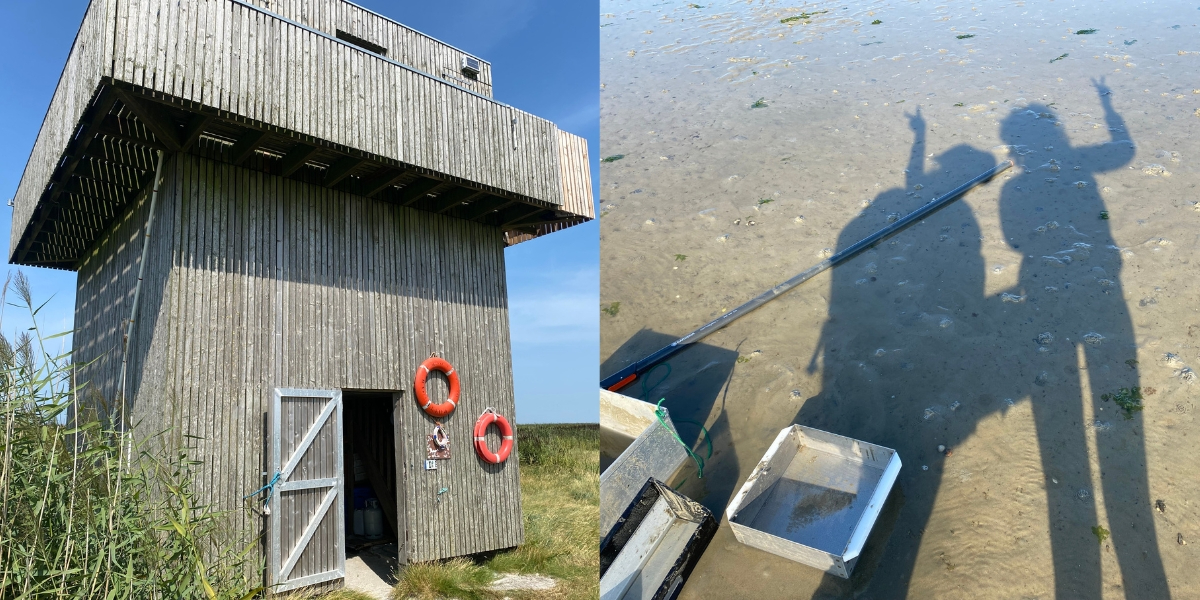
13th of August: departure
On the day of departure, the alarm goes off early, as there are still some samples to be taken. Part of our team stays behind at the cabin to handle a few other tasks around the house. Menno, Farhana, and I head out to the mudflats one last time, swinging the shrimp bucket for the final rounds, and we are almost overtaken by the incoming tide at the very end. The last sample is barely taken in time before we hurry back to the island, the sea literally on our heels. Meanwhile, the others have already emptied the toilet into the designated pit, which Angeliki had tested the day before by sitting in it to make sure it was large enough. Just as the cabin is freshly cleaned and ready for its next temporary occupants, the Asterias crew appears, anchored close to the island. We gather our belongings and wade out to the small boat that will take us to the larger ship. From the cabin’s deck, the little house grew smaller and smaller in the distance; it was time to return to the inhabited world… but we can look back on a week of wonderful company, beautiful weather, and highly successful fieldwork!
